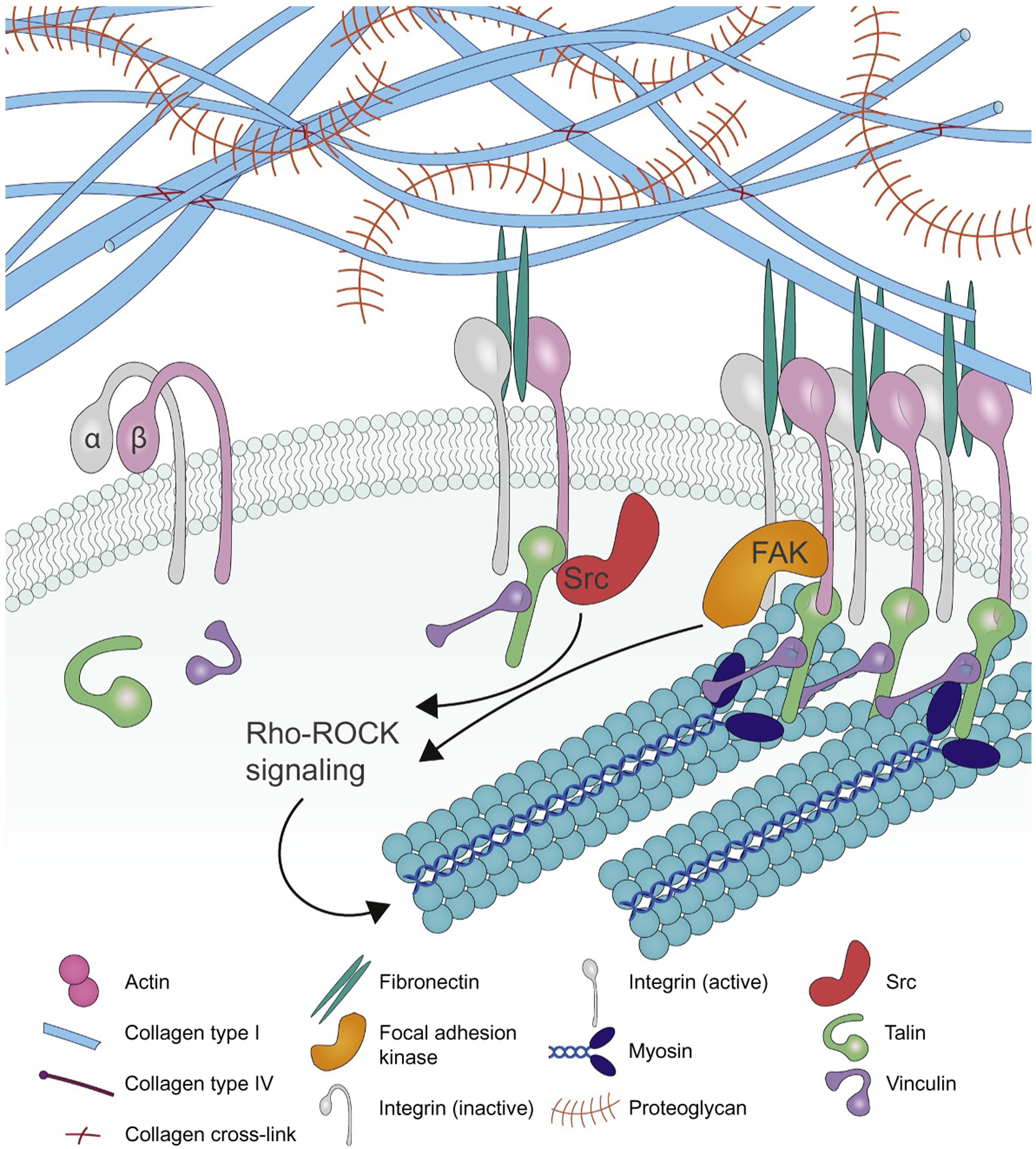Fig. 3.

Integrin-dependent mechanotransduction. Integrins exist in a resting, inactive state and can be activated by internal (inside-out activation) or external (outside-in activation) cues including extracellular force (outside-in) or actomyosin contractility or tension (inside-out). Integrin activation is mediated by conformational changes in the integrin ectodomain that shifts the integrin from a low- to a high-affinity ligand binding state. A sufficient force upon integrin engagement will trigger the force-dependent unfolding of talin to expose vinculin binding sites. Vinculin binding to talin promotes its unfolding and recruits a suite of adhesion plaque proteins including Src, paxillin, α-actinin, and FAK that trigger downstream signaling and initiate actin reorganization and RhoGTPase-mediated actomyosin contractility to drive focal adhesion maturation.
